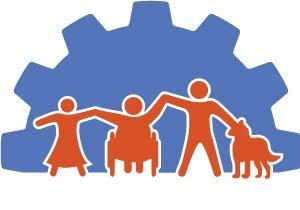Of what use is knowledge if it is not shared? The primary purpose of our Access Initiative was to provide a thoughtful and structured process for NRCDV staff to examine ways in which our organizational and programmatic policies and practices reflected our stated commitment to be more responsive to the experiences, needs, and priorities of individuals with disabilities. We then realized that others might benefit from our process of organizational development towards greater accessibility, just as we learned from those who started this journey before us. We offer this resource in that spirit and with deep humility.
It is our hope that this resource can be used to help national, state, and local domestic violence programs in:
- Beginning an assessment for your agency;

- Orienting new staff and volunteers;
- Offering continuing education materials;
- Providing a basis for staff in-service trainings and discussions;
- Exploring and enhancing existing policies and procedures; and
- Building partnerships with disabilities rights organizations.
Making an investment in staff development around these issues not only allows for the advancement of the mission of the organization through capacity building, but also fosters the individual enrichment of staff by providing opportunity for personal growth and self-reflection.
This resource page describes the story of the NRCDV’s Access Initiative, offers definitions of key terms, and provide an overview of our key activities and accomplishments in several main areas: organizational policies and practices, communication processes, the physical environment, as well as capacity building. Also included is a discussion of our lessons learned and recommendations and a list of materials and resources to support continued learning in this area. Finally, we provide links to organizations that focus on promoting accessibility and civil rights for people with disabilities.
The NRCDV would like to thank Ana Hernandez, Heidi Notario-Smull, and Angela Sutton for their leadership in shaping the vision and work of the Access Initiative during their time on staff. We appreciate former and current staff involved in the Initiative for their dedication and commitment to carrying forward its goals.
Why focus on disability?
Staff at the NRCDV share a common understanding that cultural competency is a learning process in which we must all be continually engaged. We also share a commitment to understanding the ways in which privilege and its reflections in sexism, racism, classism, ableism, heterosexism and others work together to perpetuate oppression and the violence that it enables.
A first look in the mirror – at our staff makeup, our workspace, our areas of content focus, etc. – revealed much room for growth in understanding the experiences, amplifying the voices, and responding to the needs, concerns, and priorities of people with disabilities. We agreed that bringing ableism into full view and developing our accessibility was a priority, and set out to build a multi-year project to which all staff committed.
"Disability is part of the human condition. Almost everyone will be temporarily or permanently impaired at some point in life, and those who survive to old age will experience increasing difficulties in functioning." - WHO’s World Report on Disability, 2011
- More than one billion people in the world live with some form of disability, of whom nearly 200 million experience considerable difficulties in functioning (WHO, 2011).
- Approximately 56.7 million people living in the United States had some kind of disability in 2010 (Brault, 2012).
- Lack of attention to the needs of people with disabilities means that they are confronted with barriers at every turn. These include stigma and discrimination; lack of adequate health care and rehabilitation services; and inaccessible transport, buildings and information (WHO, 2011).









